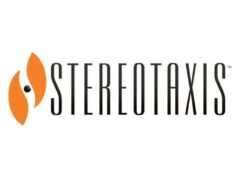MYK-461, a drug candidate from MyoKardia, may prevent and reverse development of hypertrophic cardiomyopathy in multiple genetic mouse models, according to a study published in Science.
These data add to a growing body of laboratory and clinical research demonstrating the potential of MYK-461 as an important and novel approach to treating hypertrophic cardiomyopathy, the most common cause of sudden cardiac death in young people.
To study the role of sarcomere mutations in the development of hypertrophic cardiomyopathy, MyoKardia used previously generated mouse models of this heritable cardiomyopathy, which recapitulate key morphologic and functional features of human hypertrophic cardiomyopathy. To quantify the level of left ventricular hypertrophy, the cardinal manifestation of hypertrophic cardiomyopathy, the researchers noninvasively measured left ventricular wall thickness.
MyoKardia researchers and their collaborators demonstrated that early and chronic administration of MYK-461 could prevent the development of disease. Compared to the characteristic increase in left ventricular wall thickness observed in untreated mutant mice, no increase in left ventricular wall thickness was observed in mutant mice treated with MYK-461. The research also showed that MYK-461 promoted partial reversal of disease, as shown by a measurable decline, upon administration of MYK-461, of left ventricular wall thickness in hypertrophic cardiomyopathy mice that had already developed hypertrophy.
Furthermore, the research showed that MYK-461 could prevent the development of left ventricular fibrosis, which is an important histopathological feature of hypertrophic cardiomyopathy and causally implicated in other potentially dangerous heart conditions.
“I am encouraged by these data that illustrate MYK-461’s ability to effectively reduce the consequences of hypertrophic cardiomyopathy mutations at the biochemical, cellular and whole animal levels,” says Jonathan Fox, chief medical officer of MyoKardia. “Translation of these findings from mouse to human could offer great potential to improve the lives of patients living with this devastating disease.”
“We are encouraged by these findings, which support our therapeutic hypothesis that reduction in contractility can prevent or reverse the abnormalities in structure and function leading to symptoms that afflict patients living with hypertrophic cardiomyopathy,” says Tassos Gianakakos, chief executive officer of MyoKardia. “We believe that MYK-461 is the first drug in clinical development to achieve either of these effects. This approach could represent a more general paradigm for the treatment of heritable cardiomyopathies and may bring us closer to our ultimate goal, to improve the lives of patients and their families with this debilitating disease.”
MyoKardia is currently evaluating MYK-461 in three Phase 1 clinical trials, which are primarily designed to evaluate the safety and tolerability of MYK-461 and are expected to provide data on its pharmacokinetic and pharmacodynamic profile.
The research represents the product of collaboration among scientists from MyoKardia, Harvard Medical School, the University of Colorado and Stanford University.









